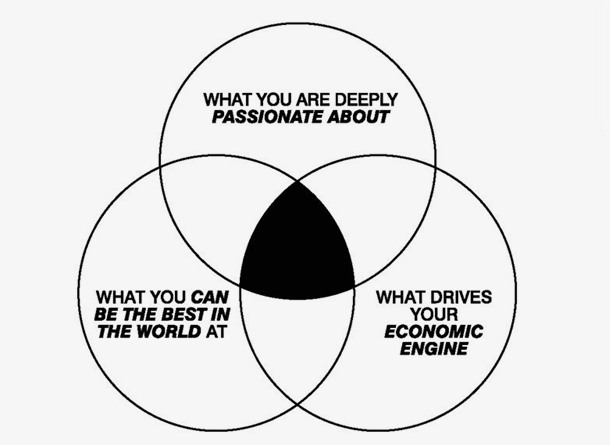
A New Paradigm in HR – The Shift to a Value-Driven Organization
March 25, 2021PLAY THIS BLOG
Every small-to-mid organization has some need for a Human Resources department. Why? Because organizations have people who work for them, who need to be hired, listened to, managed, and in cases ‘let go’, which is traditionally what HR departments do. Every business leader understands that it’s not the business owner or the leader but the people in the organization that shape and define success in an organization by driving the vision of the organization, and HR plays a crucial role in establishing and maintaining a favorable culture in the organization, that catalyzes the process of growth.
If this department is such a critical element of a business, why is there a mistrust between this department and associates? Talk to employees and read reviews online – Tons of references are available on how resources see HR as a threat to their existence in the organization. If this department was so successful, why should anyone have such a perception, or why should an organization have unhappy people?
The Solution – A Value-Driven People’s Department
Now what do we understand by a People’s department? Is it a part of HR, an extension of it, or a completely different team that runs HR in a radically new manner? A People’s department is one where the key role of an HR is distributed amongst employees themselves, who make key decisions on or behalf of the employees. Now the question arises – Will general employees be even equipped to handle matters of Human Resource? We believe it is a resounding Yes!
If we look at ourselves and evaluate what truly makes us who we are, our very purpose, how we define our daily lives and what we do to survive, we will realize that the life of an organization is no different than the pulse of each employee working in the organization. Shakespeare has done a great job of defining human life in the various stages in his poem “All The World’s a Stage”- something which holds true for an organization, a platform where every employee makes an entry, performs, and takes an exit. Their lifespan in the organization varies, some leave headlong, some step out looking for better, while some stay. A lot depends upon how they align their own aspirations with the organization’s goals and objectives, the camaraderie they develop with their associates during their professional journey in the organization, the loyalty they develop during this time period, and of course, the value system they carry with them.
From birth, we are mentored and advised by our folks regarding certain dos and don’ts. They instill the basic value system which they themselves learned and which has been further improved upon during their lives. As we move further in life, the school system, the friends we make, the people we associate with, further attempt to strengthen the same value system over and over again. Therefore, it is that value system that defines our success and failure in life and how we interact and associate with people. Every successful person has a strong value system – a principle they live by day in and day out. The same value system attracts the type of people they end up associating with, in life.
Let’s consider a general household as an example. Ask anyone – do you have a defined, documented policy at home such as an HR policy? The answer will be a resounding ‘No’. On the other hand, every organization is bound by one or the other form of a policy – The HR Document, HR Policy, HR Manual- no matter what you call it, the end objective is the same – a set of defined rules which not everyone believes in.
If manuals are all that you need to implement values, how did we grow up and remain together as a family without any documented, written and signed rule? This is something each one of us should think about very seriously. As kids, we were told to be home by a certain time, curfew hours were inflicted on a few, while some were told not to drink or smoke, and so on. In short, each of us were advised and guided at every stage with reasons, in most cases telling us how that could otherwise impact us in long term in our ability to ‘succeed’ in life.
Similarly, the moment someone is hired by an organization, there is something called an ‘employee orientation’, which lasts anywhere from maybe an hour to even days in certain cases educating the new employee about the organization, its mission, purposes and policies – thus defining a set of rules for behavior. The HR department becomes the go-to division for final answers on all issues, post consultation with the reporting manager.
With all this in place, we still see more than a fair share of departures within the organization. When we were children, did we just depart if there was no satisfaction from a discussion with our folks? There was something that held us back, right? – a sense of bonding, loyalty, a feeling of fear, of survival – now this is where I’d say, is a set of core values, the basic principles which actually hold us together.
To understand the concept, let’s take a look at the many fractured households. Dig deeper and you’ll find the root to be the value system, wherein core values in the family were shattered and personal priorities overshadowed basic principles that held the family together. However, once one party realized the impact it resulted in realizations and reunification of other members too, which resulted in rebuilding a strong bond in the family.
An organization is no different. It is just another family, a bigger one of maybe 5, 10, 100 or thousands more – which becomes complex once it grows and as multiple personalities join. The answer to everything lies in the core values of the organization. As Verne Harnish stated in his excellent book “Scaling Up”, if you have a situation/question, first consult the core values of the company and you should find the answers there.
But even when the answers are available, why then do we require hundreds of pages of manuals and policies in place? There should be nothing but a simple reference manual. Core values rather than being force-fed should be lived by example on a daily basis and instilled into the organization in a way that it becomes second nature to each and everyone.
A value-driven organization does not require a Human Resources department. It only requires a people’s team (department) where these set of individuals are empowered to do what it takes to ‘help’ the other person, for they share same goals, aspirations and belong to the same regiment, where if one stumbles, another holds. In smaller organizations, each manager and team member should be empowered to help the other. In mid to large size organizations, this team should have a mandate to listen to people and think through how the lives of associates can be simplified.
By all means, this is not easy. Now, I completely understand how some people may see loopholes arising out of such a framework and I agree, this certainly is a possibility. But imagine the power of this framework in an organization where you work. Would you ever think of leaving? Would you ever think otherwise of the organization, of your family?
Jim Collins in his book ‘Good to Great’ talks about the Hedgehog concept which is based on three key pillars – passion, competency and economic engine which form the basis for great companies to differentiate from competition through the ‘One big thing’ they know.

The Hedgehog Concept
The concept allows us to understand what we are passionate about, what we’re great at, and where does our passion lie, and this enables everyone to break down the complexities at work, staying focused on the goals.
This concept can be used to understand why people stick around in an organization. When we extend that to an Employee and Employer perspective, we understand what a firm should be doing for their employees:
-
Employee: Do they love what they are doing?
Organization: What are we doing to make them want to wake up and come to work and why? -
Employee: Are they great at what they are doing?
Organization: Are they provided with the means and the environment to do so? -
Employee: Does it pay their bills?
Organization: Are they taken care of beyond just their financial means?
To sum up, alongside the core mission, businesses need to first define a simple set of five or six values where anyone can find answers to deal with any challenge in the organization. The hiring of every new employee (a family member) needs to be based on alignment of the core values and onboarding needs to be about the values first. While the new employee walks towards their desk, it should be like moving ahead to take charge of a responsible position being part of a family, they understand and know. If wrong hires somehow get in, they will feel so out of place, that they themselves would leave or the team collectively shows them the way out.
A value-driven organization requires a team that understands human psychology, a mindset and sensitivity of a normal person like their own family members and follow those basic guiding principles that have kept their own families together – nothing less than a People’s Only Department, if at all a department is required.
 About the Author: Sachin Agrawal is a visionary entrepreneur, technologist, and enterprise architect with over 20 years of experience driving digital transformation. As the Founder & CEO of Tarika Group, a company specializing in Managed IT Services, he helps organizations streamline operations and scale through strategic technology solutions, enterprise architecture, and process optimization. With a Master’s in Information Architecture, Sachin blends deep technical expertise with business insight to deliver measurable, impactful outcomes.
About the Author: Sachin Agrawal is a visionary entrepreneur, technologist, and enterprise architect with over 20 years of experience driving digital transformation. As the Founder & CEO of Tarika Group, a company specializing in Managed IT Services, he helps organizations streamline operations and scale through strategic technology solutions, enterprise architecture, and process optimization. With a Master’s in Information Architecture, Sachin blends deep technical expertise with business insight to deliver measurable, impactful outcomes.
Beyond boardrooms and tech roadmaps, Sachin is a passionate martial artist—a 3rd Dan Black Belt and instructor in Haidong Gumdo, the Korean art of “The Way of the Sword.” He has also trained in Kyokushin Karate and Wushu, disciplines that reflect his focus, resilience, and pursuit of mastery. He is a certified scuba diver and also enjoys playing musical instruments as a creative outlet.
Through his blog, he shares practical insights on technology, leadership, and continuous improvement—bridging the gap between innovation and impact.
You can connect with him here!
Tarika Group Inc., is focused on delivering innovative business solutions through Management Consulting, Managed Service Provider (MSP), Enterprise Software Development and Digital Media Solutions.
For more information on Tarika, please visit www.tarikagroup.com.

